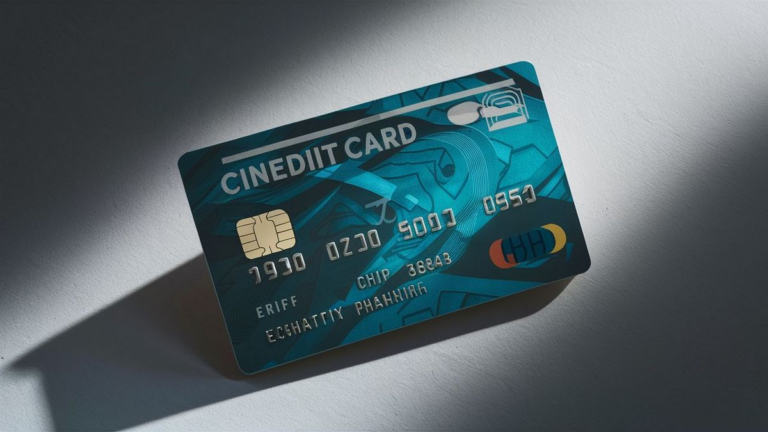In the realm of modern finance, credit cards have become ubiquitous tools for transactions, offering convenience and flexibility in payment methods. Understanding the intricacies of a credit card, particularly the credit card number, is crucial for individuals navigating the financial landscape.
The Basics of a Credit Card Number
A credit card number is a unique identifier assigned to an individual’s credit account. It serves as a reference point for transactions made using the card. Typically, credit card numbers are composed of a series of digits that adhere to a specific pattern determined by the card issuer.
Structure of a Credit Card Number
The structure of a credit card number is not arbitrary; it follows a standardized format defined by the International Organization for Standardization (ISO). The most commonly used credit card numbering system is the ISO/IEC 7812-1 standard, which allocates specific digits for various purposes within the credit card number.
A typical credit card number comprises:
- A Bank Identification Number (BIN) or Issuer Identification Number (IIN): This is the first six digits of the credit card number, which identify the institution that issued the card.
- An individual account identifier: Following the BIN, the subsequent digits represent the specific account tied to the cardholder.
- A check digit: The final digit of the credit card number is a check digit, calculated using a mathematical formula to ensure the validity of the entire credit card number.
Functionality of a Credit Card Number
Understanding the components of a credit card number is essential for both consumers and merchants. When making a purchase, the credit card number, along with other pertinent information such as the cardholder’s name, expiration date, and security code, is required to authorize the transaction.
Merchants utilize payment processing systems that validate credit card numbers in real-time to mitigate fraud and ensure that the transaction is legitimate. This validation process involves cross-referencing the provided credit card number with the issuer’s database to verify its authenticity.
Security Measures and Protection
Given the sensitive nature of credit card numbers, stringent security measures are implemented to safeguard against unauthorized access and fraudulent activities. Encryption techniques are employed to protect the transmission of credit card information during online transactions, reducing the risk of interception by malicious parties.
Additionally, card issuers implement fraud detection algorithms to monitor and identify suspicious activities associated with credit card numbers. These algorithms analyze transaction patterns and behavior to flag potentially fraudulent transactions, providing an added layer of protection for cardholders.
A credit card number is more than just a string of digits; it is a fundamental component of the financial ecosystem that facilitates seamless transactions and commerce. Understanding the structure and functionality of credit card numbers empowers individuals to navigate the complexities of modern banking and financial transactions with confidence.
Types of Credit Cards
While credit cards share common features, such as a unique identification number, there exist various types tailored to different consumer needs and financial situations. These include:
- Rewards Credit Cards: These cards offer incentives such as cashback, travel rewards, or points for specific purchases, providing additional benefits to cardholders.
- Secured Credit Cards: Designed for individuals with limited or poor credit history, secured credit cards require a security deposit, which serves as collateral, mitigating the risk for the issuer.
- Business Credit Cards: Geared towards business owners, these cards provide features and rewards tailored to business expenses, offering expense tracking tools and business-related rewards.
- Student Credit Cards: Aimed at college students and young adults, these cards often have lower credit limits and may offer educational resources on responsible credit card usage.
Managing Credit Card Debt
While credit cards offer convenience, they can also lead to debt if not managed responsibly. It’s crucial for cardholders to develop strategies for managing credit card debt effectively. Some tips include:
- Creating a Budget: Establishing a budget helps individuals track their expenses and allocate funds for credit card payments, reducing the risk of overspending.
- Pay More than the Minimum: Paying only the minimum amount due prolongs the repayment period and increases overall interest payments. Cardholders should strive to pay more than the minimum to reduce debt faster.
- Avoiding Impulse Purchases: Impulse purchases can contribute to credit card debt accumulation. Cardholders should practice restraint and only make purchases they can afford.
- Utilizing Balance Transfer Offers: Some credit card issuers offer balance transfer promotions with low or zero-interest rates for a limited period. Transferring high-interest balances to these cards can save money on interest charges.
Frequently Asked Questions
| Question | Answer |
|---|---|
| Can I use my credit card internationally? | Many credit cards are accepted internationally, but it’s advisable to check with your card issuer regarding any foreign transaction fees or limitations. |
| What should I do if my credit card is lost or stolen? | Immediately contact your card issuer to report the loss or theft. Most issuers provide 24/7 customer service for such emergencies and can assist in canceling the card and issuing a replacement. |
| How can I monitor my credit card transactions? | Most card issuers offer online account access or mobile apps where cardholders can monitor transactions in real-time. It’s essential to review statements regularly to identify any unauthorized charges. |
See also:






